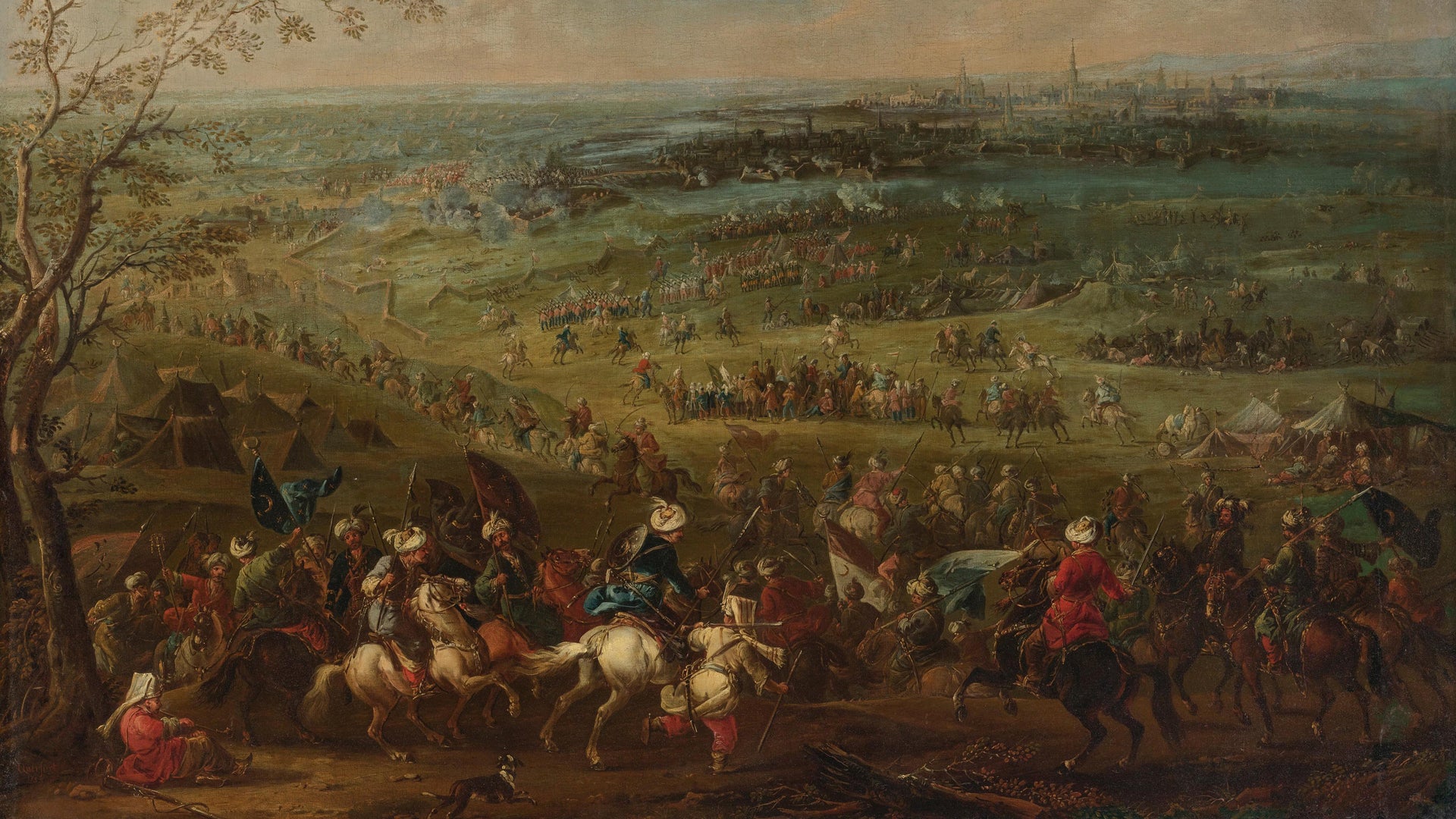
3.2 Ottoman Power
Origins of the Ottoman Empire
Osman I, a leader of the Turkish tribes in Anatolia, founded the Ottoman Empire around 1299. The term “Ottoman” is derived from Osman’s name, which was “Uthman” in Arabic.
The Ottoman Turks set up a formal government and expanded their territory under the leadership of Osman I, Orhan, Murad I and Bayezid I.
In 1453, Mehmed II the Conqueror led the Ottoman Turks in seizing the ancient city of Constantinople, the Byzantine Empire’s capital. This put an end to the 1,000-year reign of the Byzantine Empire.
Sultan Mehmed renamed the city Istanbul and made it the new capital of the Ottoman Empire. Istanbul became a dominant international center of trade and culture.
Mehmed died in 1481. His oldest son, Bayezid II, became the new Sultan.
Rise of the Ottoman Empire
By 1517, Bayezid’s son, Selim I, brought Syria, Arabia, Palestine, and Egypt under Ottoman control.
The Ottoman Empire reached its peak between 1520 and 1566, during the reign of Suleiman the Magnificent. This period was marked by great power, stability and wealth.
Suleiman created a uniform system of law and welcomed different forms of arts and literature. Many Muslims considered Suleiman a religious leader as well as a political ruler.
Throughout Sultan Suleiman’s rule, the empire expanded and included areas of Eastern Europe.
What Countries Were Part of the Ottoman Empire?
At its height, the Ottoman Empire included the following regions:
Turkey
Greece
Bulgaria
Egypt
Hungary
Macedonia
Romania
Jordan
Palestine
Lebanon
Syria
Some of Arabia
A considerable amount of the North African coastal strip
Some of the most popular forms of art included calligraphy, painting, poetry, textiles and carpet weaving, ceramics and music.
Ottoman architecture also helped define the culture of the time. Elaborate mosques and public buildings were constructed during this period.
Science was regarded as an important field of study. The Ottomans learned and practiced advanced mathematics, astronomy, philosophy, physics, geography and chemistry.
Additionally, some of the greatest advances in medicine were made by the Ottomans. They invented several surgical instruments that are still used today, such as forceps, catheters, scalpels, pincers and lancets.
Fratricide
Under Sultan Selim, a new policy emerged, which included fratricide, or the murder of brothers.
When a new Sultan was crowned, his brothers would be imprisoned. When the Sultan’s first son was born, his brothers and their sons would be killed. This system ensured that the rightful heir would take the throne.
But, not every Sultan followed this harsh ritual. Over time, the practice evolved. In the later years, the brothers would only be put in prison—not killed.
Devshirme
In the 14th century, the devshirme system was created. This required conquered Christians to give up 20 percent of their male children to the state. The children were forced to convert to Islam and become slaves.
Although they served as slaves, some of the converts became powerful and wealthy. Many were trained for government service or the Ottoman military. The elite military group, known as the Janissaries, was primarily made up of forced Christian converts.
The devshirme system lasted until the end of the 17th century.
The Decline of the Ottoman Empire
Starting in the 1600s, the Ottoman Empire began to lose its economic and military dominance over Europe.
Around this time, Europe had strengthened rapidly with the Renaissance and the dawn of the Industrial Revolution. Other factors, such as poor leadership and having to compete with trade from the Americas and India, led to the weakening of the empire.
In 1683, the Ottoman Turks were defeated at the Battle of Vienna.
This loss added to their already waning status.
Over the next hundred years, the empire began to lose key regions of land. After a revolt, Greece won its independence from the Ottoman Empire in 1830.
In 1878, the Congress of Berlin declared the independence of Romania, Serbia and Bulgaria.
During the Balkan Wars, which took place in 1912 and 1913, the Ottoman Empire lost nearly all its territories in Europe.
When Did the Ottoman Empire Fall?
At the start of World War I, the Ottoman Empire was already in decline. The Ottoman army entered the war in 1914 on the side of the Central Powers (including Germany and Austria-Hungary) and was defeated in October 1918.
Following the Armistice of Mudros, most Ottoman territories were divided between Britain, France, Greece and Russia.
The Ottoman Empire officially ended in 1922 when the title of Ottoman Sultan was eliminated. Turkey was declared a republic on October 29, 1923, when Mustafa Kemal Atatürk (1881-1938), an army officer, founded the independent Republic of Turkey.
He then served as Turkey’s first president from 1923 until his death in 1938, implementing reforms that rapidly secularised and westernised the country.
